Landscape designers are all used when creating gardens a shrub with a wondrous name - Spirea Little Princess. He conquered his blooming many gardeners, besides the plant is completely unpretentious in care. Today, any dacket will be able to raise a plant on the site of extraordinary beauty, if you carefully examine the features of planting and care for the "Japanese princess".
Spirea Little Princesses - Plant Description
Flowers called this shrub Japanese, because it would be delivered from the country of the rising sun. During the flowering period, the plant has truly royal inflorescences with a gentle pink shade, which are scattered along the top of the green ball.
- A perennial plant Spiray Japanese Little Princess grows pretty slowly, and the height can reach only 60 cm. It is considered a dwarf plant. That is why this variety of spiries is complemented by the name "Little". But at the same time, the bush has a lush and dense crown in the shape of a ball. It can reach up to 1.2 meters in diameter. Therefore, shrub is often used to design a border or individual compositions on the flower bed.
- Spirea princesses refers to deciduous plants, family of rustic. It has bright green leaves during flowering period, and in the fall they become orange with a red tint. Inflorescences in shape resemble a shield with small pink-pink bulk buds and are located on the end of the branches.
- Abundant flowering bush takes place at the beginning of summer and continues until mid-September, but only on the third year of growth. The total life expectancy of the plant reaches 30 years, but only with proper care. Spiray fruits do not have beauty, so they are cut after education, so as not to spoil the look of bright leaves.
The advantages of this variety of spirea include:
- it possesses medium frost resistance, the color of the leaves is maintained until late autumn;
- does not require abundant irrigation;
- a perennial plant that grows only 10 cm per year;
- if you properly carry out and care, the plant looks attractive for all 30 years of life;
- it does not require special care.
Different degrees of color Spiray Little Princesses you can watch in the photo. First, the bush becomes gentle-green, gradually gaining a saturation of foliage to bright green, then covered with a pink ball of flowers, and after flowering it acquires an orange color.
Spiraya Little Princesses - Planting Methods
There are several types of plants with the name "Spiraya", but they all are divided into springwenty and summers. Depending on this, the method of planting bushes is determined. Japanese spirea blooms in summer, therefore refers to the summer cultures and planting in the spring.
- You should start with choosing a place to land a shrub. First of all, it should be a plot with a sufficient amount of sunlight, a light half is allowed. It should also be considered that the root system grows close to the surface, so it is necessary to leave around a bush about 50 cm. By radius. Depending on these features, determine the combination of "Little Princess" with other plants.
- A feature of this type of spirea is the landing time. It must be carried out in the spring. But only before the first leaflets appear, regardless of its seedlings or grains.
- If you purchased a plant sapling, then carefully inspect it. Give preference with a bare branch without leaves, but with the kidneys. At the same time, the roots must necessarily be wet, without traces of rot and dryness. A good seedling when grabbing becomes flexible.
- At the next stage, carefully inspect the root system. Too bit roots should be shorted and, on the contrary, the branches with small roots need to trim shoots. So you will contribute to their development. Before boarding for a day, soak the seedlings in the liquid and then rinse them in running water.
- Spirea Japanese loves fertile soil. From this feature, the bush is growing not very quickly. If you want to slightly speed up its growth, then select deciduous soil.
- For landing, dig a pit, be sure to with the walls. Speakingly determine the scope of the root system and multiply by 3 - it will be the size of the recess. Then leave the hole to be saturated with oxygen for 2 days.
- During this time, prepare the drainage from the broken brick, which should be put on the bottom of the pit. Garden soil should consist of 2 parts of the earth and one part of the peat with river sand.
- Plant landing only on a cloudy or rainy day. Lower the seedling into the groove, carefully straighten the roots along the bottom and sprinkle the soil with a mixture before the root neck. Slightly construct the land, plenty of the plant and climb the peat.
- It is allowed to land a Japanese lytl aliens by dividing the bush. But only it follows it in the autumn period, and not in the spring. The landing should pass until the end of the leaf fall and only on the third or fourth year of growth. More mature plants are mercy of much harder.
- When choosing this method of planting spirires, Little follows a shovel to separate the bush for a third and dig together with the Earth. Then the cuttings are soaked in water for a day. After that, it is necessary to rinse the roots well and go to the landing. In this case, the first spring spirea Japanese will bloom.
- But the gardeners prefer to use the method of grooving, in which shoots will be able to gain strength from the parent plant. It is conducted in early spring after trimming and, provided that the kidneys have just begun to bloom.
- Telect the strongest bush branches, carefully grind them to the ground. Along her, make a groove on the ground and lower the plant in it. Locks from wire stick it to the ground, sprinkle the soil. In the first days, it should be watered each, since the soil should be wet for the formation of roots.
- If you want the escape to be smooth, then tie it to the peg. Inflorescences and leaves that will appear should be turned off. This is necessary so that the juices near the branch go for the development of the root system of the plant. In the future, when the process is strengthened, it is cut off from the parent plant and transplanted in the usual way.
Spirea Little Princess - Necessary Care
Since this type of plant relates to the summer plants, then he has flowers every year grow on new shoots, and last year's twigs are gradually dried. Depending on this, the caution method behind the Eastern Beauty is changing.
- Although the plant is unpretentious in care, at the same time, he should pay attention. Only with proper care, the Japanese princess will be able to please you with abundant flowering and bright foliage.
- Consider the features of watering culture. Young shoots during transplantation and in the period after trimming need abundant moisture, but adult plants are slightly slightly moistened by the soil. But this does not concern dry periods. The root spirea system is close to the surface of the soil, so the lack of moisture will adversely affect growth and flowering.
- It should also often be carried away around the bush and loosen the soil for the flow of oxygen to the roots, and also timely remove the foliage. Inflorescences, after they stop blossom, you need to cut, do not allow the formation of a seed box.
- The feeding is held 2 times a year. The first provides for the introduction of mineral fertilizers immediately after trimming. During the flowering period, the plant followed by superphosphates in a solution of liquid cowboat (10 liters. Infusion use 10 g. Fertilizers).
- Spiree is not subject to various diseases, but there are cases of damage to the plant and a spider tick. You can determine the ticks on the abundance of the web on the sheets, the presence of small holes on the leaves and their early flaw. Special attention is paid to this disease of the plant in the arid period. As soon as you notice the damage of the plant, immediately treat the bush with drugs according to the instructions on the package.
- With a soft climate, the alielia Little does not need additional shelter for the winter. If you assume a cold winter or there is no snow, then you should cover the branches with a thick layer of foliage.
How to properly pruning Spiray Little Princesses
For giving shape, the bruise is trimmed. Spiriya Japanese Little Princess refers to the summer plants whose inflorescences are formed on young shoots. Therefore, the trimming of the bush should be carried out early in the spring before the appearance of the kidneys.
- First, inspect the culture for the presence of dry and dead branches, since after winter not all shoots remain alive. They are trimmed by the secateur under the root. If this is not done, then when flowering, such a "ballast" will pull the bush to the ground.
- In addition, all branches should be shortened and leave 15-20 cm. Heights from the soil. But it is necessary to leave the largest kidneys. It is only necessary to carry out such an operation with a bush after 4 years of growth of the plant. Small shoots are also cut completely so as not to select juice from more mature branches.
- If, after the complete, as an annual trimming, the bush does not gain strength and weak shoots grow, then the plant should be replaced with a new one.
Spirea Princess Little - Use in Landscape Design
- An unpretentious plant is often used by gardeners for designing single beds, as the bush has a spherical shape. It is planted in the center to enhance the color range or make a bark around the flower bed.
- A small height of the bush allows you to plant a living fence along the fence or around pools, arbors and recreation sites. Also, the Japanese spires can distinguish the garden zones.
- If you plant an oriental beauty in a big pot, then you can adjust the time of flowering and achieve pink inflorescences even in winter. But for this, grow the plant in the pales.
- Spirahi is also often used to form flower slides, on which the plant occupies a leading place due to its bright color and long period of flowering.
- It is advantageous to straighten the plant with coniferous plants, lavender, barbaris or hunter. This type of spirius can get along with most other garden plants, the main thing is that they do not give shadow on her.
- If you want to focus on pink Japanese Spiray flowers, then the juniper or bushes are not with such abundant blooming around it. Also, take into account the formation of flowers in East Beauty and other plants.
Spirea Japanese will decorate any garden. With proper landing and minimal care, it will be worthy of admiration, and your family album is necessarily added by photos with this gentle flower.

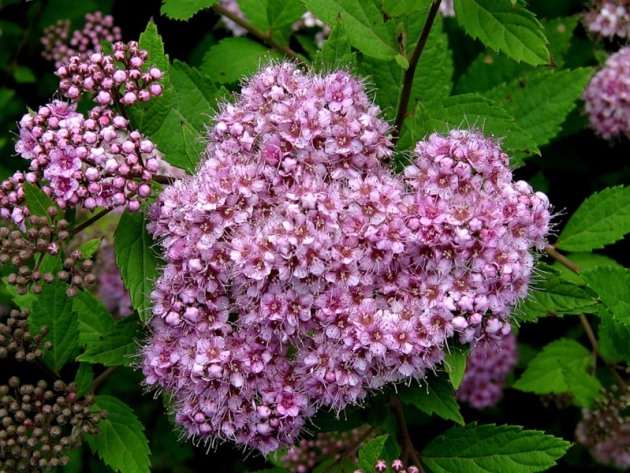
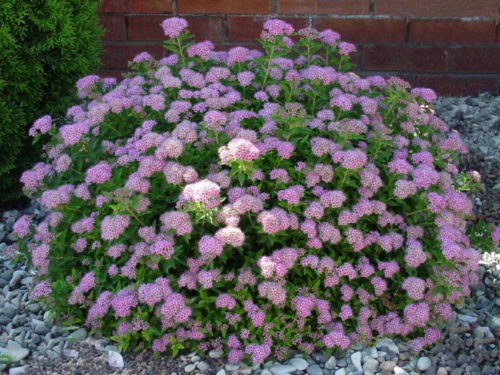
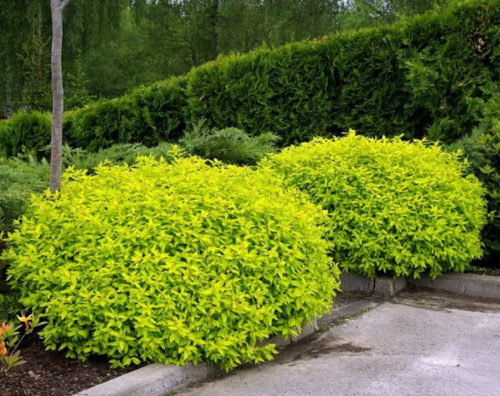
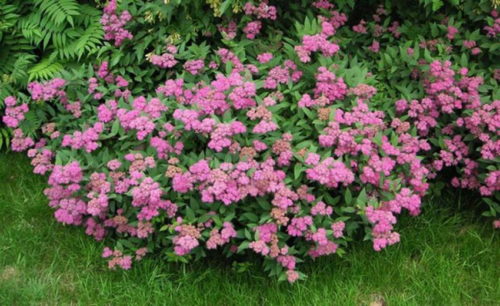
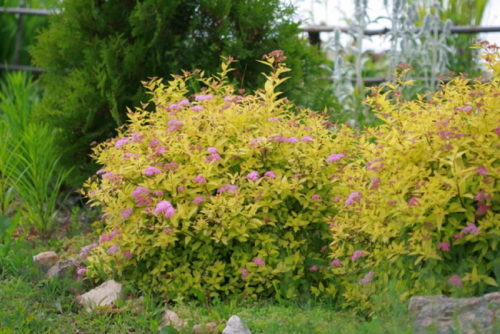
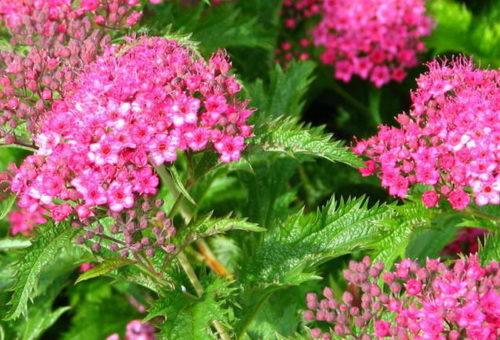


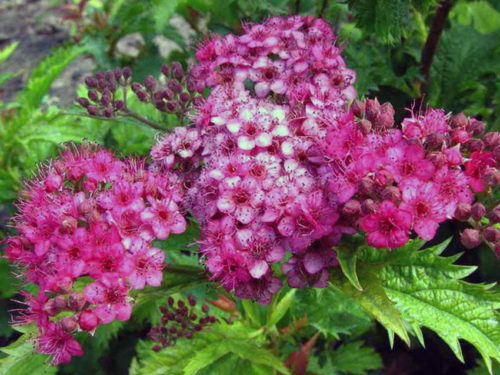
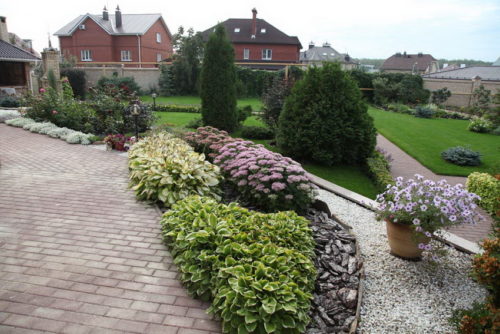


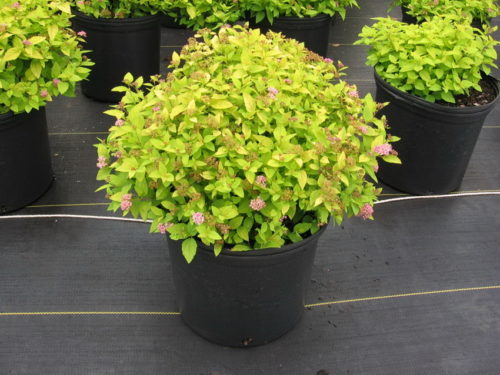












 Start a discussion ...
Start a discussion ...